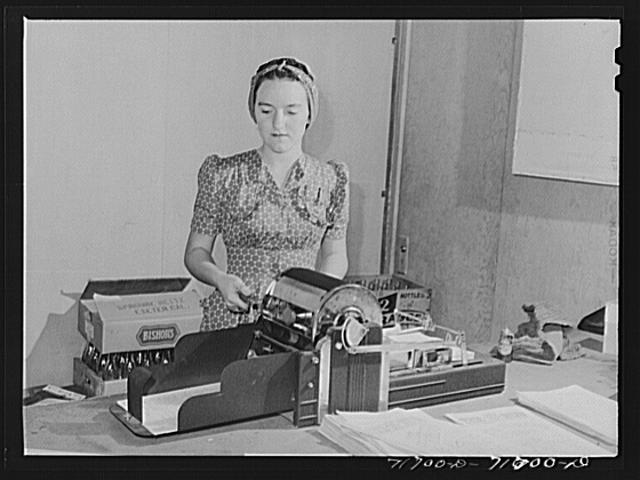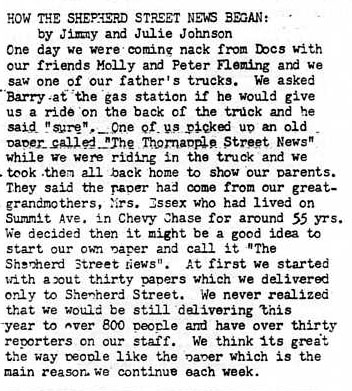
All three newspapers depended on a machine called the mimeograph to produce the newspapers. Although mimeograph technology improved during the years in between The Thornapple Street News and The Shepherd Street and The Leland Street Sunday News, the printing process remained essentially the same.
The Leland Street Sunday News, May 12, 1974. CCHS 2010.1015.01.
A typewriter is used to strike the words into a wax sheet (called a "master"), creating a stencil. The stencil is placed around an ink-filled drum and sheets of paper are fed in between the drum and the base of the mimeograph. Using a hand-crank (later done electronically), the drum is rotated, forcing the ink through the stencil and onto the paper.
The hand-crank model was the one used by The Thornapple Street News in the basement of the Williams home. According to a 1973 article on The Shepherd Street News, that newspaper was printed on a mimeograph at Jim Johnson's office, though the editors were saving to buy their own machine. The Leland Street Sunday News was printed on Jonas Kolker's (father of Claudia Kolker) office mimeograph until the purchase of a spirit duplicator in 1974.
The spirit duplicator differs somewhat from the mimeograph in that the ink, instead of being pressed through a stencil, is placed on the master copy itself and a solvent is used to transfer the image onto each sheet of paper which is passed through.
All three newspapers sought to participate in the process of producing the newspaper from start to finish. However, the technology involved in producing the paper often required the assistance of the parents and their office mimeographs to produce the needed number of copies on time. The parents of the young reporters recognized the educational value of the newspaper and in some cases went above and beyond to ensure the success of their children's newspapers…
The Leland Street Sunday News, February 24, 1974. CCHS 2010.1015.01
Scroll to the bottom of this page to see a mimeograph machine and a spirit duplicator in action.
Distribution

While each newspaper contained the comings and goings of a specific street, the stories and updates attracted a far wider audience than any of the editors could have imagined.
The Shepherd Street News, October 10, 1972. CCHS 1989.27.01.
The Shepherd Street News, September 9, 1972. CCHS 1989.27.01.
The young reporters had to get up early (6 AM in the case of The Leland Street Sunday News) to deliver the newspaper before the readers woke up. For elementary and middle school age children to wake up in the early morning, on a weekend, and deliver the newspaper says much about the sense of responsibility these children felt towards their readers. In addition to hand-delivering copies of the newspaper to the local community, all three newspapers sent copies to subscribers throughout the country (The Shepherd Street News charged extra for postage).

- Watch a Mimeograph machine in action
- Watch a Spirit Duplicator in action
In the next section read about how the young reporters supported the community and how the community supported the young reporters…


